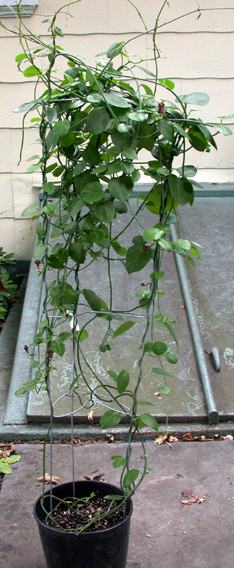
This plant is native to Somalia, Ethiopia, Uganda, Zaire, Chad, Cameroon, Burkina Faso, Senegal, with sub species in Tanzania, Zaire, Uganda, and Kenya. It has been known since1838.
This plant has medium thick stems (under 1/4" in diameter), the leaves ar about 2 inches long (40-50cm) and wide when full grown and are soft and fleshy rather than thick and succulent. Each leaf ends with an extended point. This is a rampant grower and an exuberant bloomer. It easily covered this four foot tomato cage and is still reaching out to climb other supports.








